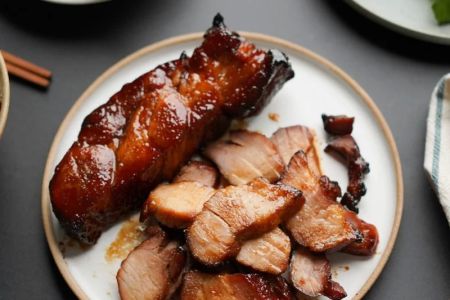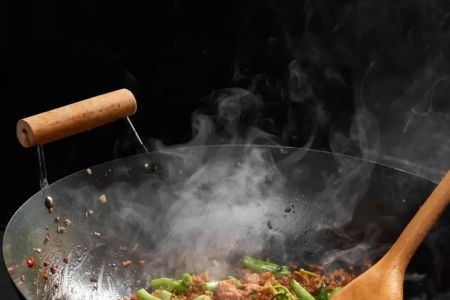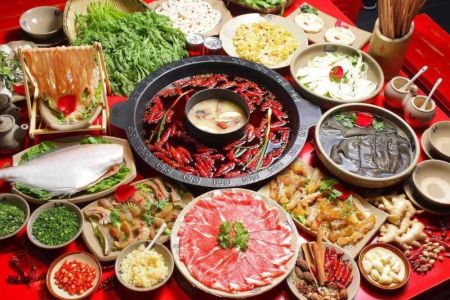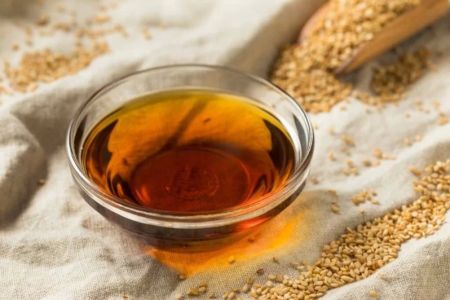- What-Do-Asian-People-Eat
- Regional-Variations-in-Asian-Cuisine
- Typical-Ingredients-and-Flavors
- Cultural-Influences-on-Asian-Eating-Habits
- Popular-Asian-Dishes-and-Meal-Structures
- Where-to-Find-Authentic-Asian-Food
1. What Do Asian People Eat? Understanding the Breadth of Asian Cuisine
When considering the question “what do Asian people eat,” it is essential to recognize the incredible diversity and richness of Asian cuisine. Asia is a vast continent with dozens of countries, each offering unique flavors, ingredients, and culinary traditions. From the spicy curries of India and Thailand to the delicate sushi of Japan and hearty dumplings in China, the foods Asian people consume reflect a blend of geography, history, and culture.
Asian meals are often balanced, combining rice or noodles with vegetables, protein sources such as fish, pork, chicken, or tofu, and an array of spices and sauces. Unlike Western meals, which may emphasize individual portions, many Asian cultures focus on communal eating with shared dishes, encouraging social connection over food. This shared dining experience is a key part of daily life and celebrations.
1.1 The Role of Staples in Asian Diets
Rice, wheat, and noodles serve as fundamental staples in Asian diets. For example, in East Asia, white or sticky rice is a daily staple, while wheat-based products like dumplings, noodles, and steamed buns dominate in Northern China and Central Asia. Southeast Asia leans heavily on rice and rice noodles, complemented by fresh herbs and coconut-based sauces.
This staple variety is complemented by vegetables like bok choy, bamboo shoots, eggplant, and mushrooms, which provide nutrients and texture, making meals vibrant and healthy.
2. Regional Variations in Asian Cuisine
Asia’s immense size means the foods people eat vary widely by region, shaped by climate, religion, and local agriculture. Understanding these variations provides insight into the richness behind the question of “what do Asian people eat.”
2.1 East Asia: Japan, China, Korea
East Asian countries emphasize rice, soy products like tofu and soy sauce, and fresh seafood. Japanese cuisine is renowned for its simplicity and freshness, featuring sushi, sashimi, and miso soup. Chinese food varies greatly but includes staple dishes such as Peking duck, dim sum, and stir-fries with diverse regional spices. Korean meals are famous for their fermented foods, such as kimchi, and barbecue techniques involving marinated meats grilled at the table.
2.2 Southeast Asia: Thailand, Vietnam, Indonesia
Southeast Asian cuisine is characterized by bold flavors, including the use of lemongrass, chili, lime, and coconut milk. Thai cuisine blends spicy, sweet, sour, and salty tastes in dishes like green curry and pad thai. Vietnamese food focuses on fresh herbs and light broths exemplified by pho and fresh spring rolls. Indonesian cuisine offers a rich tapestry of spices with dishes like nasi goreng (fried rice) and satay skewers.
2.3 South Asia: India, Pakistan, Bangladesh
In South Asia, the diet is heavily influenced by spices such as turmeric, cumin, and coriander. Indian cuisine offers diverse vegetarian and non-vegetarian options, including curries, lentils, and flatbreads like naan and roti. Meals often include rice or bread alongside richly spiced gravies and pickles.
3. Typical Ingredients and Flavors Found in Asian Meals
Asian food’s distinctiveness comes from its rich palette of ingredients and flavor techniques. Understanding these gives a clearer picture of what Asian people eat.
3.1 Common Ingredients
Typical ingredients include rice, soy products (tofu, soy sauce, miso), fresh seafood, pork, chicken, green leafy vegetables, ginger, garlic, chili peppers, sesame oil, and various herbs like cilantro, basil, and mint. Legumes and lentils also play a significant role in South Asian diets.
3.2 Flavor Profiles and Cooking Techniques
Asian cuisines employ techniques such as stir-frying, steaming, fermenting, grilling, and slow simmering. Flavors range from spicy and pungent to umami-rich and sweet. For instance, Korean kimchi uses fermentation to create complex sour and spicy notes, while Japanese dashi broth highlights subtle umami flavors.
4. Cultural Influences on Asian Eating Habits
Eating in Asia is more than just nourishment; it is deeply intertwined with social customs, health philosophies, and religious practices.
4.1 Communal Eating and Social Bonds
Many Asian cultures emphasize communal meals where family and friends share multiple dishes. This creates a warm environment fostering relationships and collective enjoyment. For example, in Chinese culture, meals are occasions to bond, and the concept of “face” encourages respectful sharing and polite eating.
4.2 Health and Traditional Beliefs
Traditional medicine influences diet in many Asian countries. Foods are often chosen for their supposed health benefits, balancing “yin and yang” energies or “hot and cold” properties. This explains the popularity of certain soups, teas, and herbal ingredients believed to aid digestion and well-being.
4.3 Religion and Dietary Restrictions
Religious beliefs such as Buddhism, Hinduism, and Islam affect what people eat. Vegetarianism is common in Hinduism and some Buddhist practices, while halal dietary laws guide Muslim communities. These religious frameworks shape menus and culinary creativity.
5. Popular Asian Dishes and Meal Structures Explained
To understand what Asian people eat, it helps to look at specific dishes and how meals are structured across the continent.
5.1 Breakfast Traditions
Breakfasts vary but often include savory items such as congee (rice porridge) in China, idli and dosa (rice cakes and crepes) in South India, or noodle soups in Vietnam. These meals are usually light yet flavorful, designed to start the day with energy and balance.
5.2 Lunch and Dinner Sharing
Lunch and dinner often feature multiple dishes served simultaneously: a combination of rice or noodles with vegetable stir-fries, protein-rich entrees, soups, and pickles or sauces. A typical Chinese dinner may include steamed fish, stir-fried greens, tofu dishes, and rice, all shared by the family.
5.3 Snacks and Street Food Culture
Street food is integral to many Asian cultures. From Japanese takoyaki (octopus balls) to Indian samosas and Thai mango sticky rice, these snacks highlight the creativity and regional flavors available at any time of day. Popular online food stories showcase how street vendors contribute to preserving traditional recipes and feeding local communities.
6. Where to Find Authentic Asian Food and Related Services
If you are interested in exploring the authentic flavors of Asia or finding traditional ingredients, our website, Chinese Food, offers a comprehensive selection of products, services, and shops specializing in genuine Asian cuisine. Whether you want cooking ingredients, recipes, or dining recommendations, Chinese Food is a trusted resource that brings the taste of Asia right to your doorstep.
Real-life testimonials and user reviews on our platform highlight how people have successfully recreated traditional Asian meals or discovered new favorites. This makes it easier for anyone curious about what Asian people eat to access quality information and products tailored to their culinary journey.







![Top Chinese Restaurants for Authentic Cantonese Cuisine in [Your City]](https://img.gochinarose.com/d33/2507/4157910400_450x300.webp)
